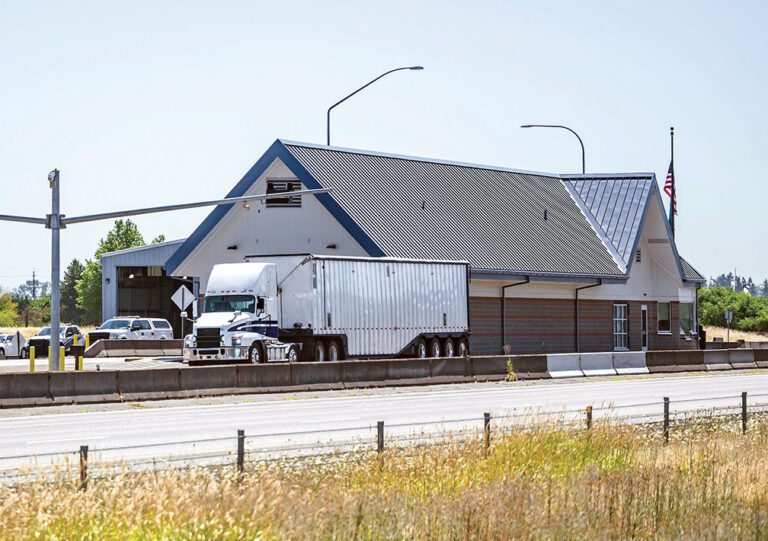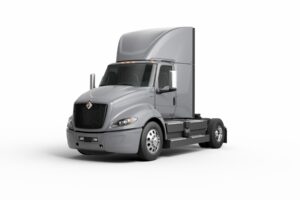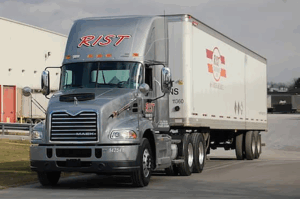Anyone who pays attention to trucking regulations has heard some of the hullabaloo about increasing the weight limit for certain heavy-duty tractor-trailers.
The idea has been met with stiff opposition from many trucking industry stakeholders. Here’s a brief “refresher course,” along with a few of the pros and cons … well, mostly cons.
In April 2023, H.R. 2948 was introduced into the U.S. House of Representatives by Reps. Lance Gooden (R-TX), Brian Mast (R-FL) and Aaron Bean (R-FL). If enacted, the bill would increase the weight capacity of stinger-steered automobile transporters to 88,000 pounds. The bill was immediately sent to the House Committee on Transportation and Infrastructure for review.
A month later, a second bill, H.R. 3447, was introduced by Rep. Greg Stanton (D-AZ) that would allow vehicles powered by hydrogen fuel cells to exceed current weight limits. It, too, was sent to committee.
While these particular bills address a specific segment of trucking and a specific power source, previous efforts to raise truck weights were more generalized.
It wasn’t that long ago that over 200 shippers and trucking businesses teamed up in the Coalition for Transportation Productivity (CPT) to push for the Safe and Efficient Transportation Act (SETA). This legislation, introduced in the summer of 2015, would have increased maximum gross vehicle weights across the country to 97,000 pounds for six-axle tractor-trailer combinations. The effort received a lot of publicity, but the act was ultimately defeated.
Just months later, in September 2015, H.R. 3488, the Safe Flexible and Efficient (SAFE) Act, was introduced by Rep. Reid Ribble (R-WI), proposing to raise maximum gross vehicle weights to 91,000 pounds. It too failed.
On the surface, it might appear that allowing higher maximum weights would provide an assist to the trucking industry in several areas. Adding 12,000 to 14,000 pounds of cargo capacity to trucks represents a 25% to 35% increase.
Theoretically, three trucks would be able to haul the amount of cargo that currently requires four. That’s a 25% reduction in equipment cost, a substantial hedge against a shortage of drivers, an increase in available truck parking, reduction in tolls and more.
Safety concerns of hauling increased weight will always be debated. An extra axle adds two additional braking mechanisms (drums or discs) to the unit, offsetting additional stopping distance requirements of the additional weight. Still, increased mass unquestionably presents greater handling challenges.
In addition to safety factors, there are other concerns about allowing heavier trucks on the highways, as noted in a statement issued by the Truckload Carrier Association’s (TCA’s) position paper against an increase in weight limits.
For one thing, changing the length or axle configuration of trailers would create a huge financial burden for carriers. Extra axles increase rolling resistance, increasing both fuel consumption and engine emissions. Heavier vehicles would put additional strain on the nation’s already crumbling infrastructure. Also cited in the TCA statement was a 2016 study conducted by the Department of Transportation that recommended no changes be made to current size and weight limits.
Increased truck weights in the U.S. are opposed by numerous groups, including railroads, the Teamsters and other unions, safety advocacy groups, and numerous trucking organizations, including TCA and associations representing truck drivers and owner-operators. The two most cited reasons for this opposition are concerns about safety and damage to the infrastructure.
Another issue that could impact proposals for increased truck weights may simply be timing. The trucking industry is approaching an historic crossroads in a transition to zero-emissions vehicles. The transition is expected to be slow: The two leading candidates for replacing the diesel engine, battery electric power and hydrogen fuel cell, are both limited by current technology and infrastructure. As the industry deals with new power sources and changing regulations, discussion of changing weight and size requirements may be subdued, for now.
Still, as industry searches for efficiency and profitability, the question of larger and heavier vehicles to more efficiently meet the needs of the country’s increasing population will continue to be debated. Current weight and size regulations are in their fourth decade. Will they see a fifth?
Cliff Abbott is an experienced commercial vehicle driver and owner-operator who still holds a CDL in his home state of Alabama. In nearly 40 years in trucking, he’s been an instructor and trainer and has managed safety and recruiting operations for several carriers. Having never lost his love of the road, Cliff has written a book and hundreds of songs and has been writing for The Trucker for more than a decade.









The real concern of lawmakers’ is the stopping distance the increased weight will have and the damage the truck will do if it hits a 4 wheeler. It is a ligament concern but it could be mitigated by an improved braking system if the stopping distance can be proven shorter, even with the additional weight.
It is a fact that every long-time truck driver and every brake mechanic and every brake engineer knows that the current brake technology used doesn’t allow the shortest stopping distance the tires are capable of providing. Spring applied drum brakes do not apply equal stopping force or the greatest stopping force and thus the stopping distance is longer than necessary.
I would be in favor of increasing weight limits if truck/trailer brakes would be redesigned to apply the greatest force the tires could provide on whatever road surface/conditions are at that moment. The Scandinavia trucks have a much improved braking system that allows for a much shorter stopping distance than our American trucks. Just look up this stunning short video on YouTube titled;
“Incredible near miss of child as truck driver slams on brakes”.
If the truck manufactures would show their trucks to have stopping ability like that in the video, the lawmakers would bump up the GVW.